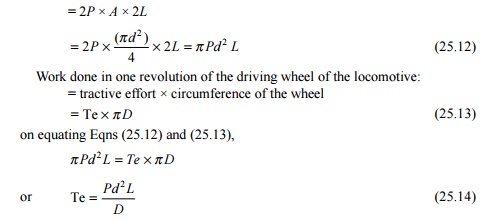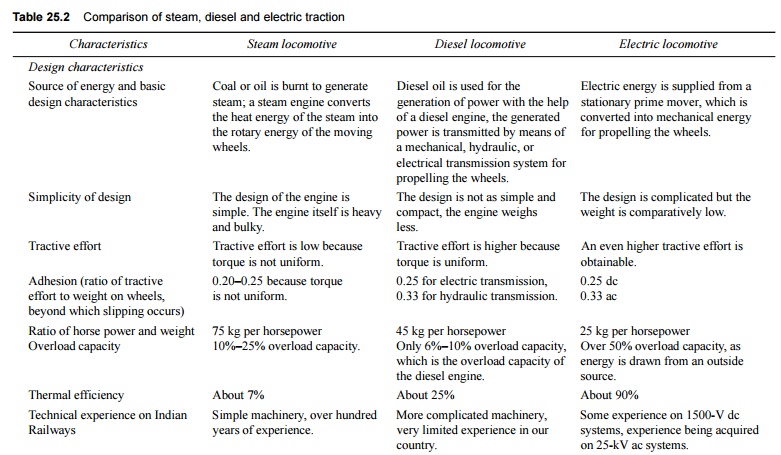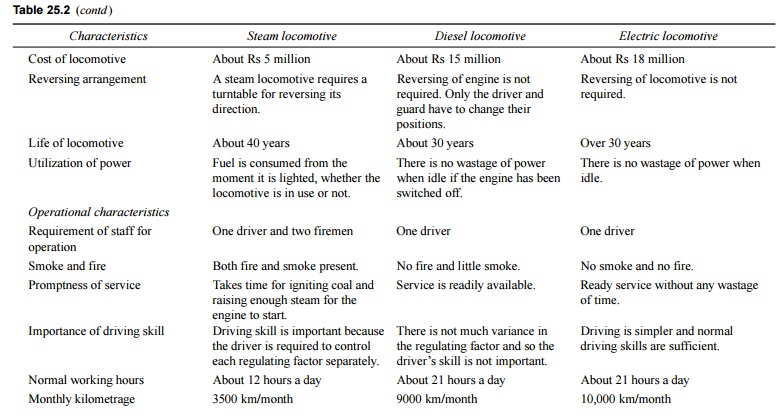Chapter: Civil : Railway Airport Harbour Engineering : Railway Engineering : Train Resistance and Tractive Power
Train Tractive Effort of a Locomotive
Tractive Effort of a Locomotive
The tractive effort of a
locomotive is the force that the locomotive can generate for hauling the load.
The tractive effort of a locomotive should be enough for it to haul a train at
the maximum permissible speed. There are various tractive effort curves
available for different locomotives for different speeds, which enable the
computation of the value of tractive effort. Tractive effort is generally equal
to or a little greater than the hauling capacity of the locomotive. If the
tractive effort is much greater than what is required to haul the train, the
wheels of the locomotive may slip.
A rough assessment of the tractive effort of different types
of locomotives is provided in the following sections.
1 Steam Locomotive
The tractive effort of a steam
locomotive can be calculated by equating the total power generated by the steam
engine to the work done by the driving wheels.
Assume P to be the
difference in steam pressure between the two sides of the cylinder, A is
the area of the piston of the engine, d is the diameter of the piston of
the engine, L is the length of the stroke of the engine, D is the
diameter of the wheel of the locomotive, and Te is the mean tractive effort of
the locomotive. Work done by a two-cylinder steam engine
= 2 ×
difference in steam pressure × area of the piston × 2 × length of the stroke
= 2P × A
× 2 L = p Pd2L

It is clear from Eqn (25.14) that tractive effort increases
with an increase in steam pressure difference and the diameter and length of
the piston, but decreases with an increase in the diameter of the driving wheel
of the locomotive.
2 Diesel
Locomotive
Tractive effort of a diesel-elective locomotive can be
assessed by the following
empirical formula.
Te = 308 x RHP / V
(kg) (25.15)
where Te is the tractive effort
of a diesel-electric locomotive, RHP is the rated horsepower of the engine, and
V is the velocity in km/h.
3 Electric Locomotive
The tractive effort of an electric locomotive varies inversely
with the power of speed. The empirical formulae for calculating the approximate
value of tractive effort are as follows.
For an dc electric locomotive: Te = a/V3 (25.16)
For an ac electric locomotive: Te = a/V5 (25.17)
where a is a constant depending upon the various
characteristics of the locomotive.
The important characteristics of three types of tractions are
compared in Table 25.2.
Table 25.2 Comparison of steam,
diesel and electric traction




Related Topics